Product Name: KX1916 Hand-crank Crane (Lifting Machine)
Product Code: KX1916
Size: 270*70*230mm
Weight: About 100g
Material: plastic parts + belt wheel + screws + wire ties + wire....
Color: Red and Yellow Mix
Battery Required: No
Packing: 200pcs
Box Specification: 600*450*550mm
The ancient Greeks classified the pulley as a simple machine. As early as 400 BC, the Greeks knew how to use the compound pulley. Around 330 BC, Aristotle discussed the "compound pulley" system in his work "Mechanics" in the 18th question. Archimedes contributed a lot of knowledge about simple machines and explained the kinematic theory of the pulley in detail. It is said that Archimedes once alone used a compound pulley to pull a sea ship full of goods and passengers. In the first century AD, Hero of Alexandria analyzed and wrote about the theory of the compound pulley, proving that the ratio of the load to the applied force is equal to the number of rope segments bearing the load, that is, the "pulley principle."
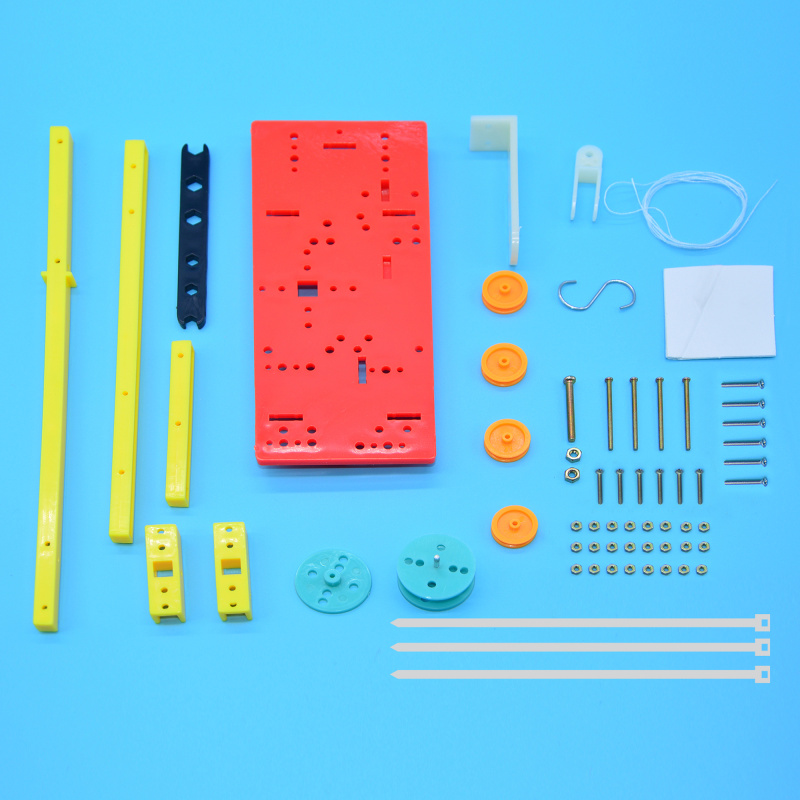
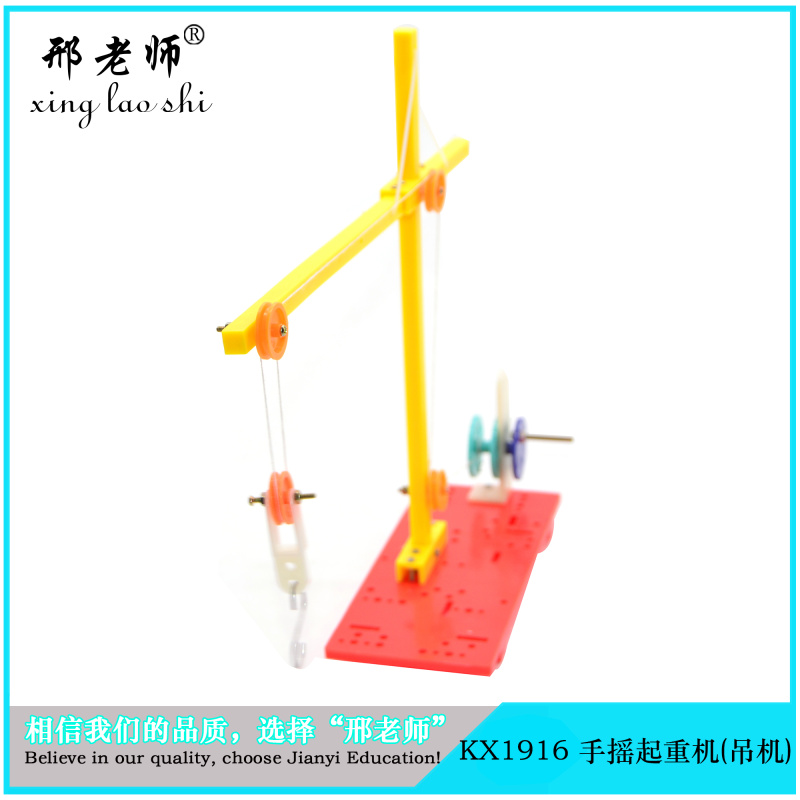
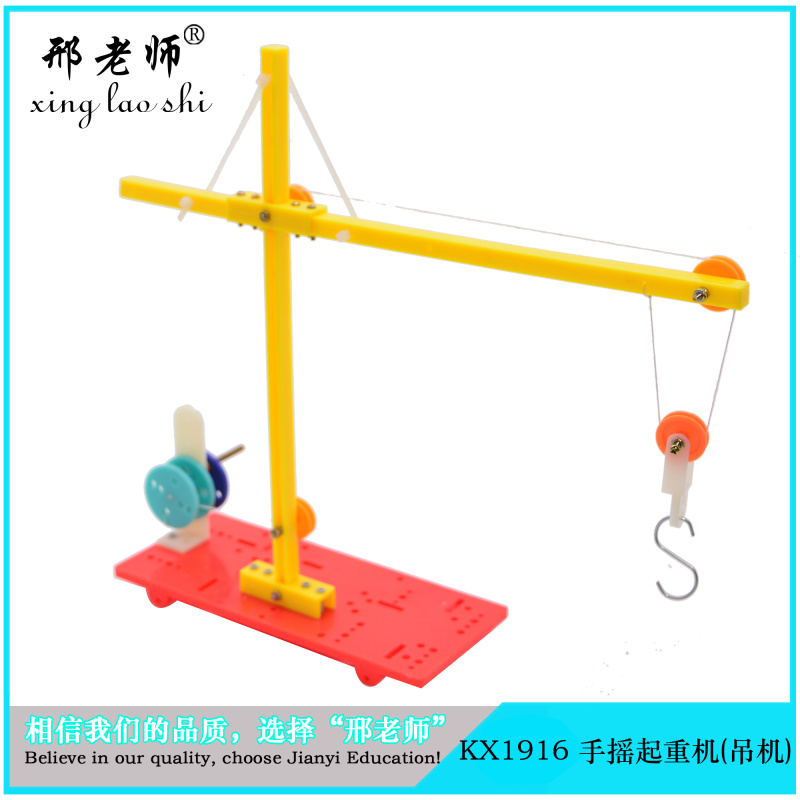
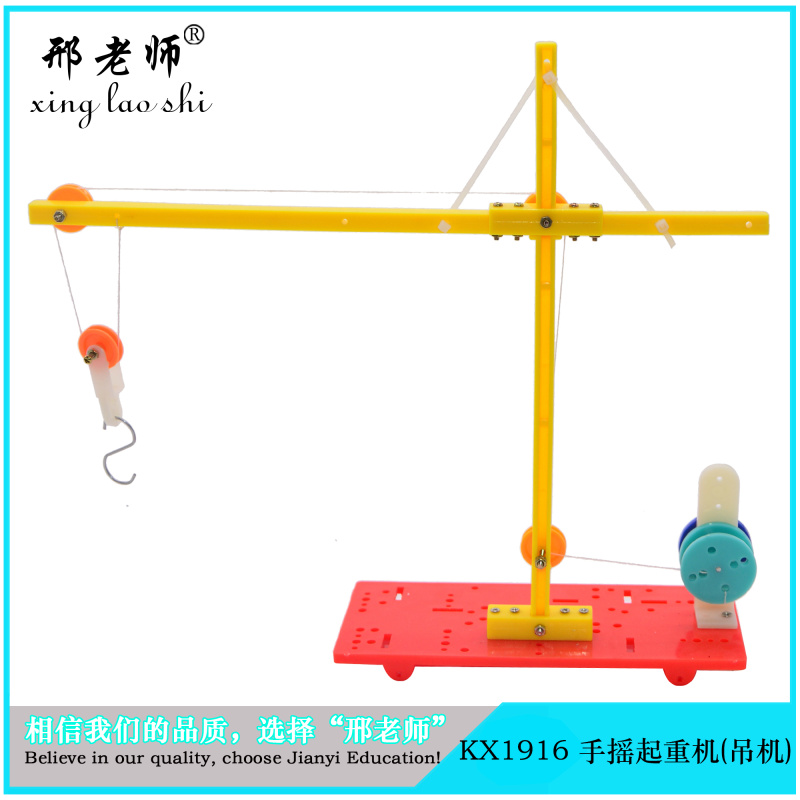
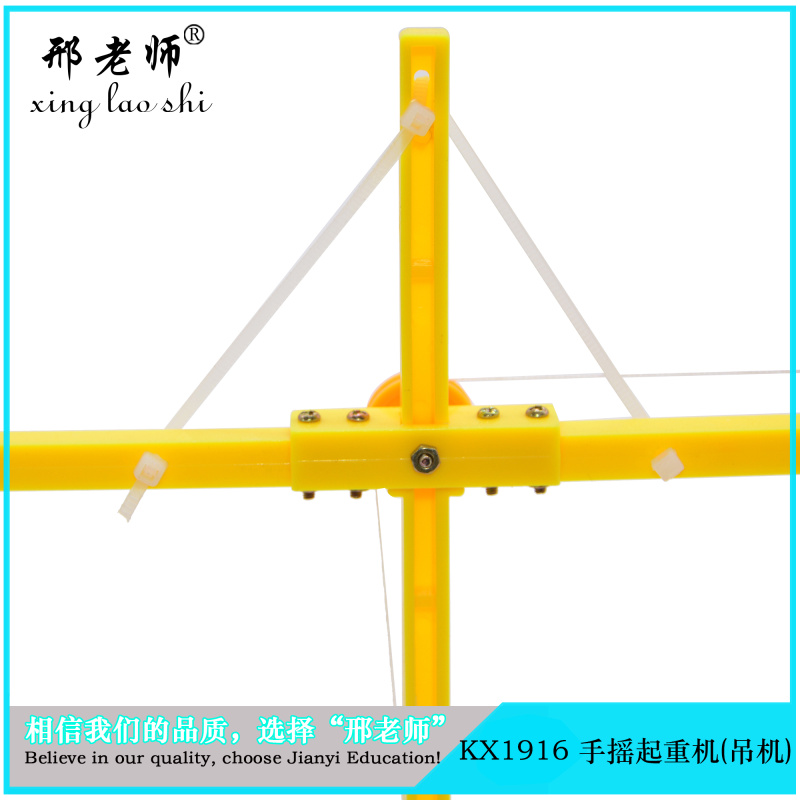
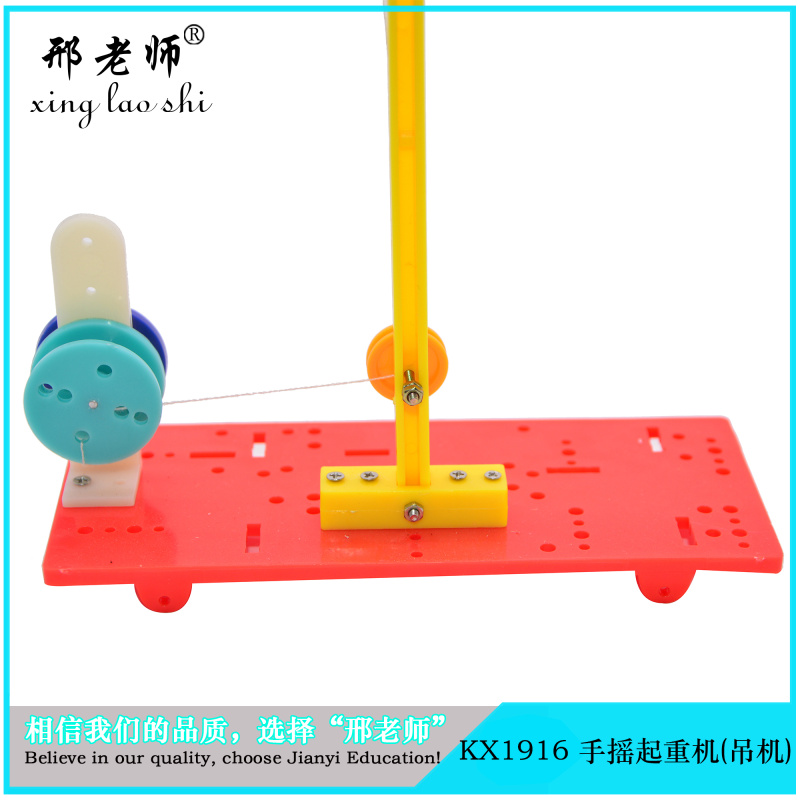
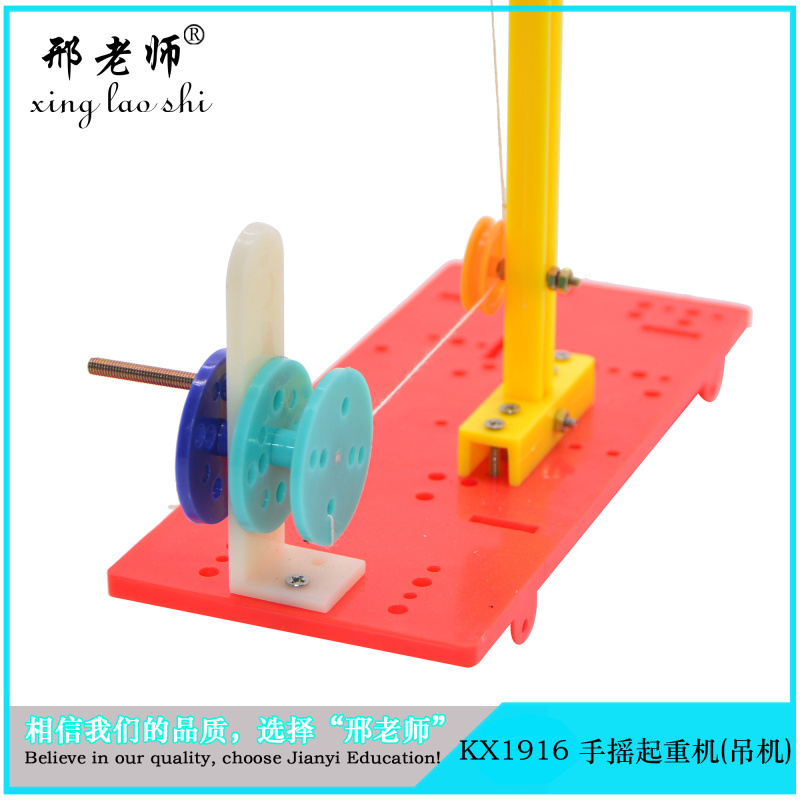
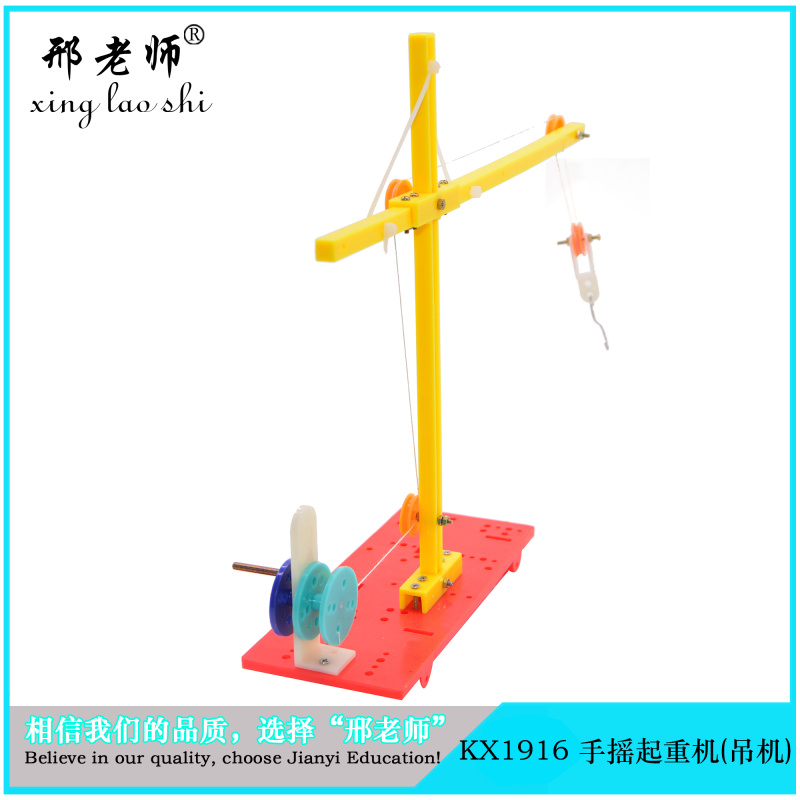
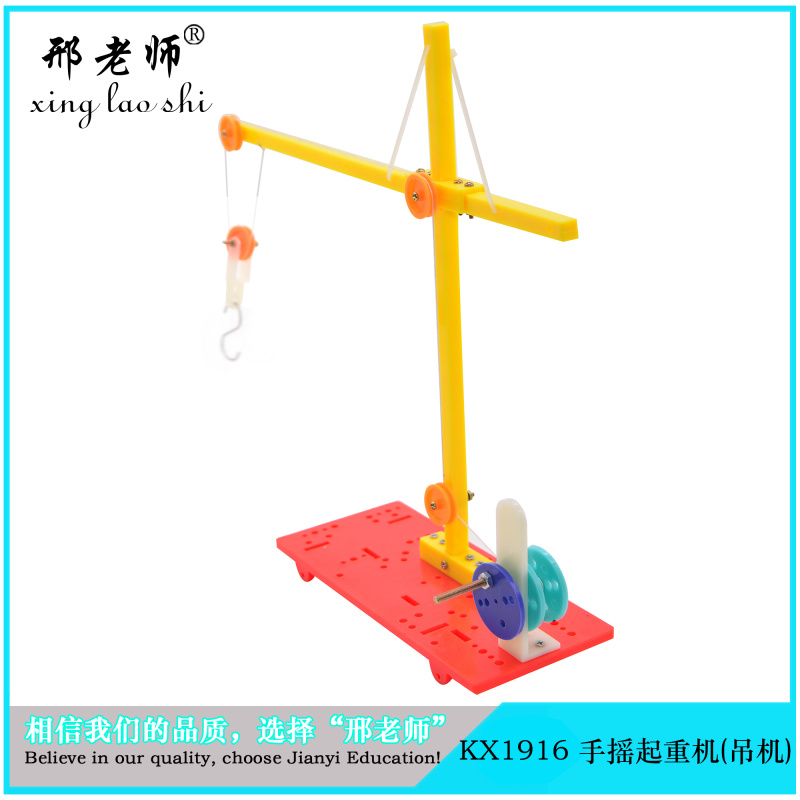
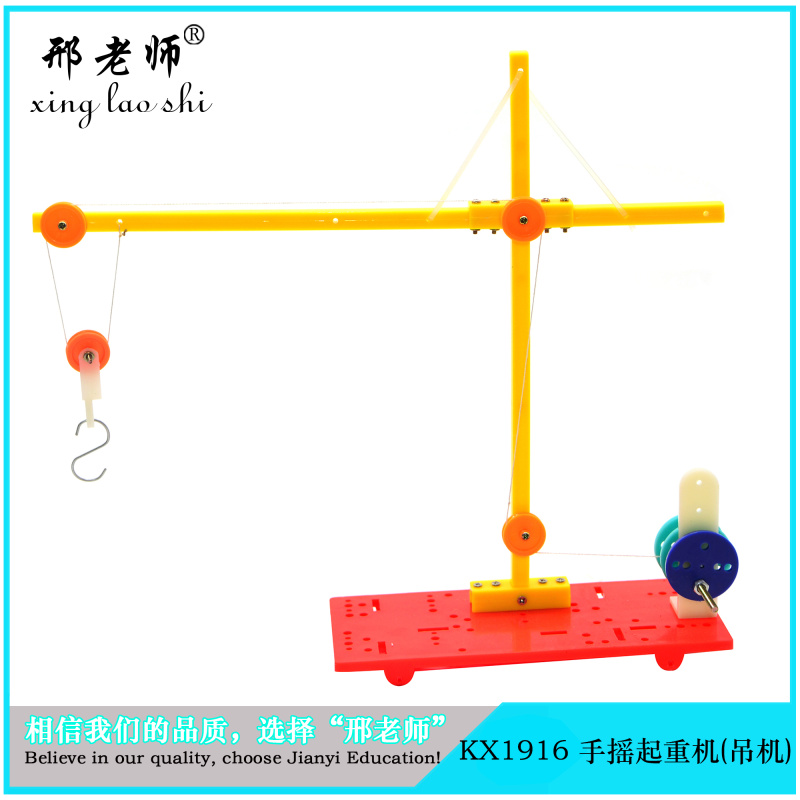
Experimental Objective: 1. To gain a preliminary understanding of mechanics and mechanical principles.
2.
Know the application of crane in daily life.
3. Understanding the structure of a pulley can help distinguish between a fixed pulley and a moving pulley.
Science Project:
1
Recognize and prepare the necessary materials for the experiment.
2
Install in sequence according to the instructions.
Three,
Installation completed and debugging is underway.
Scientific Principles:
Pulley system: A device composed of a fixed pulley and a moving pulley. It is both efficient and can change the direction of the force. However, it cannot save work because the pulley system saves force but consumes distance. In order to save both energy and change the direction of the force, the fixed pulley and the moving pulley can be combined into a pulley system.
A pulley system is composed of several fixed pulleys and movable pulleys, which can achieve the purpose of both saving effort and changing the direction of force. In use, how much effort is saved and how the ropes are wound depend on the effectiveness of the pulley system.
Features: A pulley system uses several sections of rope to lift an object, and the force required to lift the object is one-fifth of the total weight. The free end of the rope that goes around the moving pulley counts as one section, while the rope that goes around the stationary pulley does not count. Although using a pulley system saves effort, it increases the distance traveled, with the distance traveled by the driving force being greater than the distance traveled by the weight. The amount of distance traveled mainly depends on the number of sections of rope around the stationary pulley. By performing experiments with a pulley system, it is easy to see that although using a pulley system saves effort, it increases the distance traveled—the distance traveled by the driving force is greater than the distance traveled by the cargo.
Knowledge Treasure:
A pulley is a simple machine used to lift heavy objects and save effort. A pulley is a small wheel with a groove around it that can rotate around an axis. A simple machine composed of a disc with grooves that can rotate around a central axis and a flexible rope (such as a rope, tape, cable, or chain) that crosses over the disc and can rotate around the central axis is called a pulley.
Science Expansion:
In mechanics, a typical pulley is a disc that can rotate around a central axis. The surface of the disc has a groove where the rope is wound. When pulling on either end of the rope, the friction between the rope and the pulley will cause the pulley to rotate around the central axis. A pulley is actually a deformed and movable lever. The main function of a pulley is to pull loads, change the direction of force, and transmit power, etc. A mechanical system composed of multiple pulleys is called a "pulley system" or a "compound pulley." The mechanical advantage of a pulley system is large, allowing it to pull heavier loads. A pulley can also be a component of a chain drive or belt drive, transmitting power from one rotating shaft to another. According to whether the center axis of the pulley moves, a pulley can be divided into a "fixed pulley" and a "movable pulley"; a fixed pulley's central axis remains stationary, while a movable pulley's central axis can move, each with their own advantages and disadvantages. By assembling a fixed pulley and a movable pulley together, a pulley system can be formed. A pulley system not only saves effort but also changes the direction of force.
In 10 BC, the ancient Roman architect Vitruvius described a crane in his architectural manual. This machine had a mast with a pulley at the top, which was fixed in place by a towing rope. It used a winch to pull the cable through the pulley to lift heavy objects. Some over-weight cranes could use two masts in a V-shape to laterally move the lifted object, but the movement was very limited and the operation was very difficult.
Crane is a multi-functional hoisting machinery that can vertically lift and horizontally transport heavy objects within a certain range. It is also known as a crane. It belongs to material handling machinery. The working characteristics of cranes are intermittent movements, that is, the corresponding institutions in a working cycle, such as material picking, movement, unloading, etc., alternate work. The development and use of cranes in the market are becoming more and more widespread.


